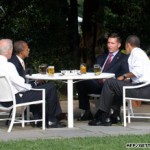Does Baseball’s Antitrust Immunity Extend to Baseball Card Contracts?
The baseball antitrust exemption has turned out to be one of the great anomalies of American law. First recognized in the Supreme Court’s Federal Baseball decision in 1922 at a time when “commerce” was understood much more narrowly than it would be in the post-New Deal world, the exemption took on a life of its own in the 1953 Toolson decision when the Supreme Court acknowledged that professional baseball was commerce after all but that it was leaving the matter of invalidating the exemption to Congress. In 1972, the Court reasserted the exemption in Flood v. Kuhn, and Congress reaffirmed it in 1999 in the Curt Flood Act in regard to all matters covered by the exemption except major league labor relations.
While there is no question that the Major League Baseball antitrust exemption still exists, it is not at all clear what aspects of the baseball business are protected by the exemption. Does it apply to any undertaking by Major League Baseball, or is it limited to certain baseball-specific activities? Comments made by my colleague Matt Mitten in an interview presented elsewhere suggest that Matt believes that the exemption applies to all aspects of the professional baseball business.
I am not sure that this is true. A quarter of a century ago the federal district court for the Southern District of Texas ruled that the baseball antitrust exemption did not extend to restrictions on broadcasting. (Henderson Broadcasting Corp. v. Houston Sports Ass’n, Inc, 541 F. Supp. 263, 265-72 (S.D. Tex. 1982)) So far as I can tell this decision has never been overruled or even directly contradicted by a decision of a different court. Although the Supreme Court has provided no definitive answer, the conventional wisdom appears to be that the exemption applies only to matters central to the “business of baseball.” This was the standard adopted in the relatively recent case, Major League Baseball v. Crist, 331 F.3d 1177, 1183 (11th Cir. 2003).
Of course this interpretation just replaces one question with another. We still have to ask what aspects of the baseball business are “central” to its operation, and as of yet, we have no definitive answer. Clearly territorial monopolies, minor league salary caps; and restrictions of minor league player mobility are central to the operation of baseball, but what else falls into this category?
Now Major League Baseball has gone and entered into a contract with Topps, Inc., giving that company the exclusive right to use Major League team names and logos with in the production of baseball cards. Topps’ primary competitor in the baseball card market, Upper Deck, can still issue baseball cards of players under its non-exclusive license with the Major League Baseball Players Association, but it will not be permitted to use team names or symbols on its cards. As a practical matter, this will probably force the company out of the baseball card business, at least until Topps’ exclusive license expires.
It is hard for me to see how the production of baseball cards by an independent company could constitute an activity “central to the business of baseball.” There was a time when baseball cards were a primary way that fans, particularly young fans, learned about the teams and players of Major League Baseball, but in the age of the Internet, it is hard to believe that baseball cards are in anyway a necessary component of marketing Major League Baseball to the public (if they ever were). Consequently, the new Topps monopoly will likely to be found to be subject to antitrust challenge. Whether or not the challenge will succeed is a topic for a different post.
On an entirely personal note, I have extremely fond memories of the old Topps baseball card monopoly that existed from 1956 to 1980. In that period, only Topps produced baseball cards, and the cards were printed on cheap cardboard, packed to the gills with information about the pictured player not otherwise readily available, and packaged with super sweet sticks of bubble gum. Even with the gum, they were incredibly inexpensive—a penny a card until the late 1960’s, and less than two-cents a card until the late 1970’s.
There were almost no baseball card shops in that era, so cards had to be purchased by the pack in regular stores that sold candy. If you were missing a player’s card that you felt you needed, you had to buy more packs or else figure out a way to trade with a friend who had a card of the player you wanted. Many kids learned the rudiments of negotiation from such exchanges.
In fact, the only problem with the old Topps monopoly was that it wasn’t a true monopoly. Fleer, which competed with Topps in the larger bubble gum market managed to sign a few well-known players including a handful of stars—Ted Williams, Maury Wills, and Wilmer “Vinegar Bend” Mizell (who was later a congressman from North Carolina) for example—but the company never had enough players under contract to produce its own bubblegum based player set. In 1962, the year he was the National League’s Most Valuable Player, the only way to get a Maury Wills baseball card was to find one on the back of a Post Cereal box.
Because the Topps monopoly only applied to cards packaged with bubblegum or its equivalents cards could be marketed with other products, although that rarely happened. (The Post experiment of putting baseball cards on cereal boxes only lasted for three years.). In that era, no one thought of simply marketing the cards alone.
If the new Topps monopoly can somehow bring back the magic to baseball card collecting, then it will be a restraint of trade that we should gladly accept.


 As I listened to the political pundits argue about
As I listened to the political pundits argue about  I enjoyed serving on “
I enjoyed serving on “